Blog

Huge Spike in Delinquencies Chalked up to Seasonal Factors
Thernheadline news from the Lender Processing Services (LPS) MortgagernMonitor Report for June, thatrnearly mortgage delinquencies had surged 10 percent during the month,rnwas released two weeks ago in LPS’s regular “first look” at itsrnmonthly data. The full report, released this morning, added somerndetails to that announcement.</p
Thernsudden increase, which LPS Applied Analytics Senior Vice PresidentrnHerb Blecher called “representatives of a documented seasonalrnphenomenon,” brought the national delinquency rate from 6.08 in Mayrnto 6.68 percent in June, an increase of 9.9 percent. The rate isrnstill down 6.9 percent from the beginning of the year and 6.5 percentrnfrom June 2012. The rate of foreclosures and of seriously delinquentrnloans continued their decline.</p
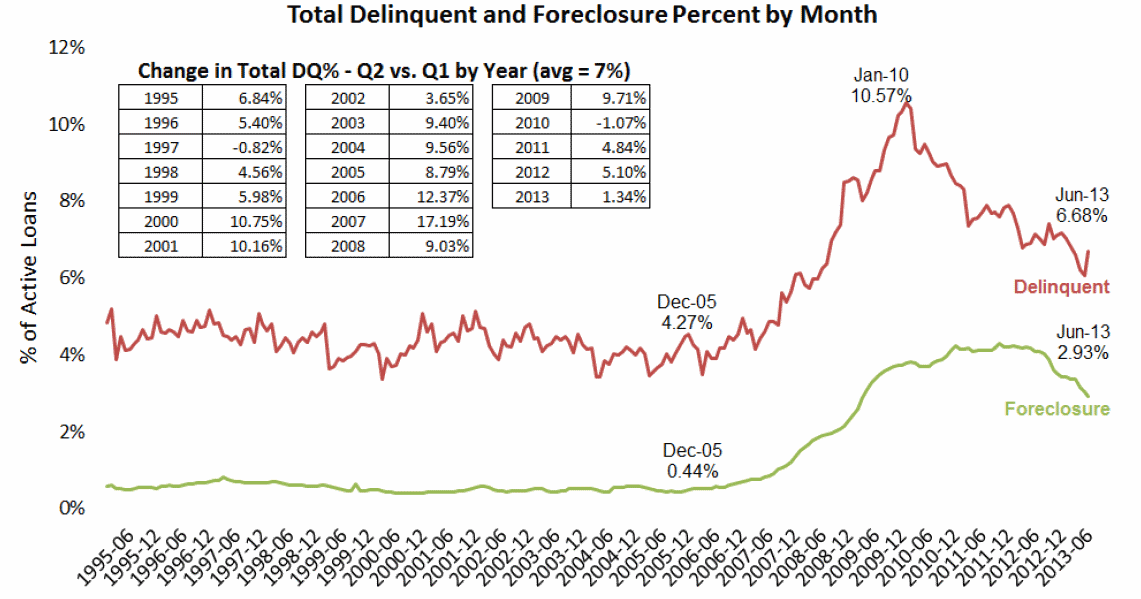 </p
</p
Therernwere 700,000 newly delinquent loans in June and they were widelyrndispersed geographically with every state but Vermont, for which norninformation was supplied, experiencing double-digit increases. The<bbiggest jump occurred in two western states – Colorado which was uprn31,7 percent and Utah with a 29.6 percent increase in 30+ dayrndelinquencies. </p
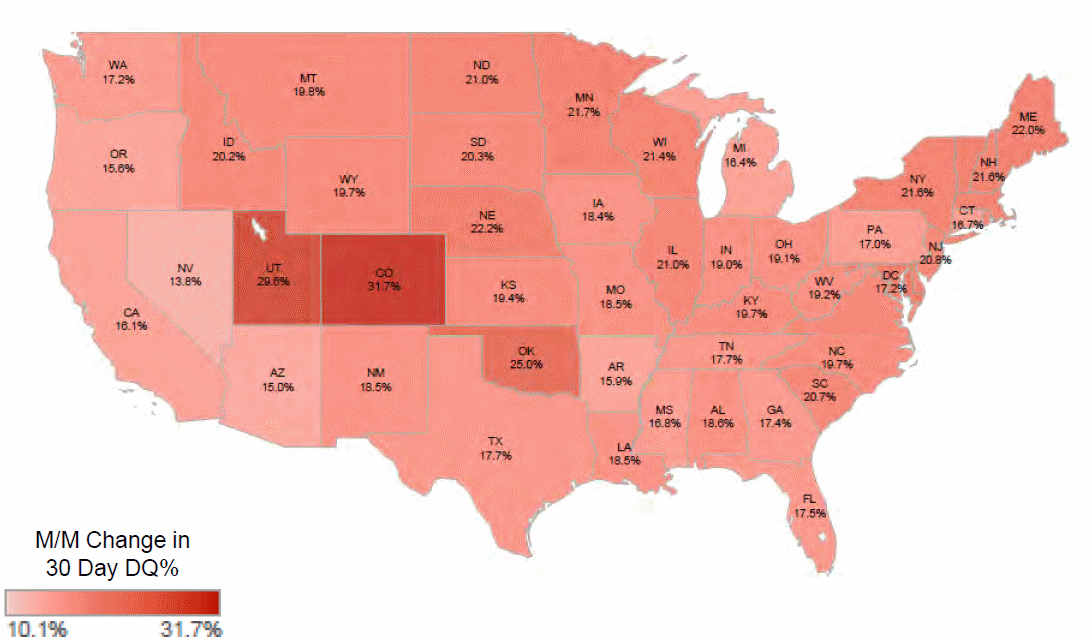 </prn
</prn
Delinquenciesrnincreased for both fixed rate and adjustable-rate mortgages. Thernformer jumped 19 percent from May and the latter 18 percent.</p
Blecherrnexplained the seasonal nature of the increase. “Over thernlast 18 years, similar changes occurred in June for all but four ofrnthose years. And this month’s increase was felt across all 50rnstates — from a roughly 14 percent month-over-month rise in 30-dayrndelinquencies in Nevada to a nearly 32 percent upswing in Colorado.rnAdditionally, we examined the data to see the effect of recentrnincreases in interest rates on delinquency rates and found nornsignificant impact thus far. Adjustable-rate mortgages (ARMs), whichrnone would expect to be impacted most by such interest rate changes,rnactually saw delinquency rates rise at a lower relative rate thanrnthose of fixed-rate mortgages.</p
“Ofrncourse, focusing solely on month-to-month shifts in mortgagernperformance can be like tracking the stock market on a daily basis,”rnBlecher continued. “You may see periodic spikes and dips, butrnwithout a longer-term perspective, you lack a clear picture of howrnthe market is actually performing. Though June’s 9.9 percent spikernwas indeed significant — and a reversal of five consecutive monthsrnof declines — on a quarterly basis, the rise was much more moderate</bthan the historical average. Since 1995, delinquency rates have risenrnfrom Q1 to Q2 in all but two years, with an average 7 percentrnincrease. By comparison, the 2013 Q1 to Q2 increase was just 1.34rnpercent."</p
Therernwere also fewer loans that went from delinquent to current, that isrn”cured” in June. The number of loans in early stages ofrndelinquency that cured during the month fell to a five year low andrnthe cure rate for more seriously delinquent loans was also down. </p
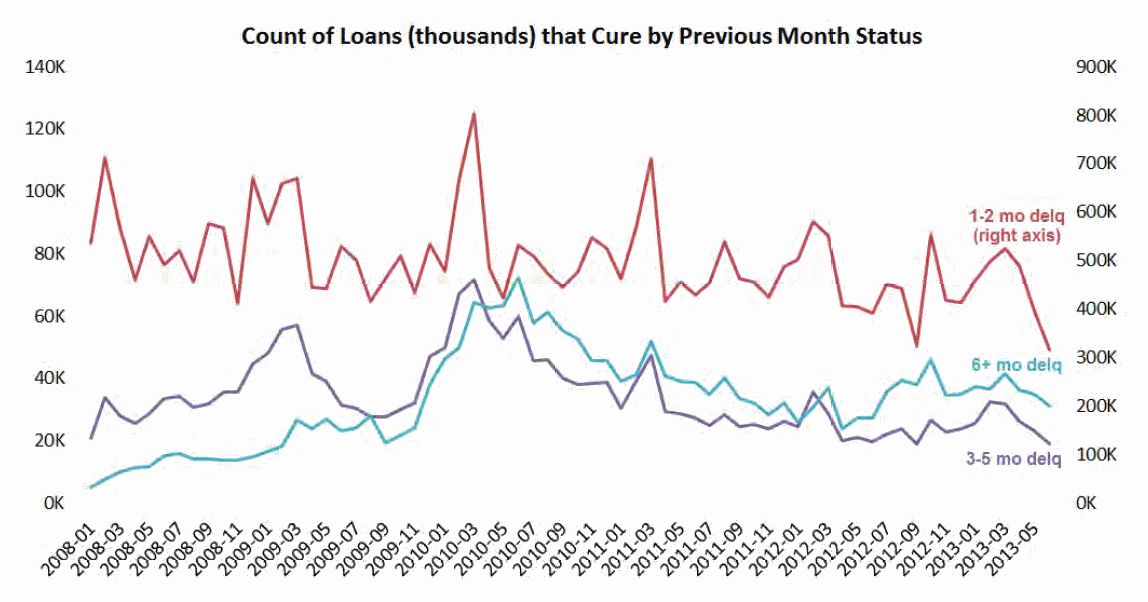 </p
</p
LPSrnalso reported that the serious delinquency rate (90+ days) was downrn1.5 percent form May to June to a rate of 5.62 percent. This wasrn22.3 percent below the rate in June 2012. Foreclosure starts droppedrnfrom 116,812 in May to 109,042 in June; there were 173,556 starts inrnhe previous June. </p
Thernrate of foreclosure sales in states using a judicial form ofrnforeclosure has been increasing for three years but remains belowrnhalf the rate for foreclosures in non-judicial states. Consequently,rnwhile the backlog of foreclosures is clearing, inventories inrnjudicial states are down only 26 percent from their peaks against arndrop of 50 percent in non-judicial states. </p
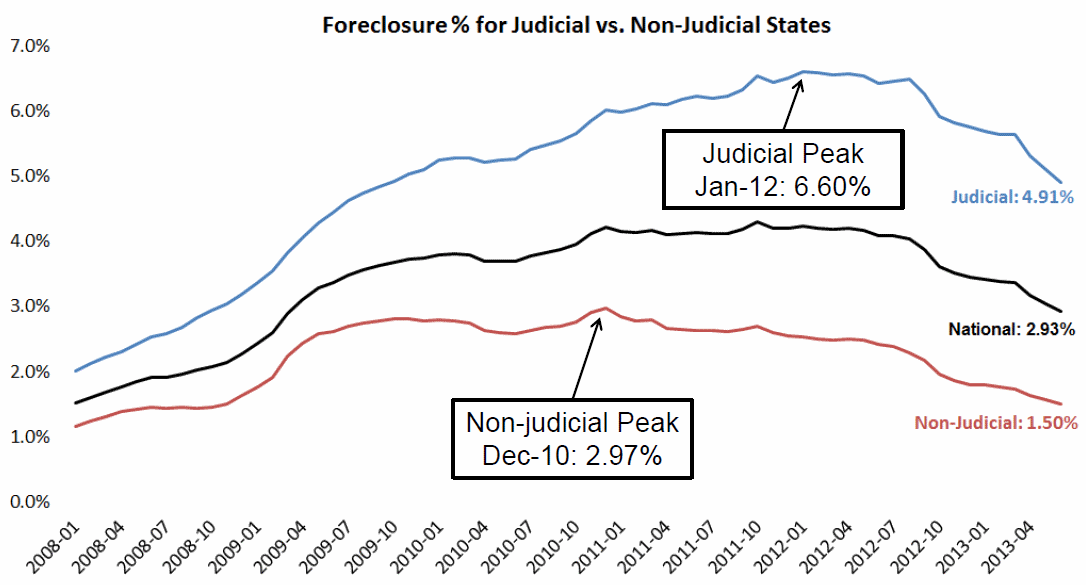 </p
</p
Increasingrnmortgage rates are already having an effect on possible refinancingrnopportunities. LPS examined the pool of potentially refinaceablernloans and found that, despite the improved equity situation broughtrnabout by rising home prices nationally, fewer loans have refinanciblerncharacteristics at the new rates. Many homeowners in fact now havernlower existing rates than those currently available. Approximatelyrn12 percent of active loans, about 5.9 million, fit broad-basedrnrefinancible criteria, down from 8.9 million in March of 2013 whenrnrates were at historic lows. Still, while prepayment ratesrn(historically a good indicator of refinance activity) had declined 12rnpercent in June in the face of rising interest rates, they werernhigher than when interest rates were last at this point back in 2011.</p
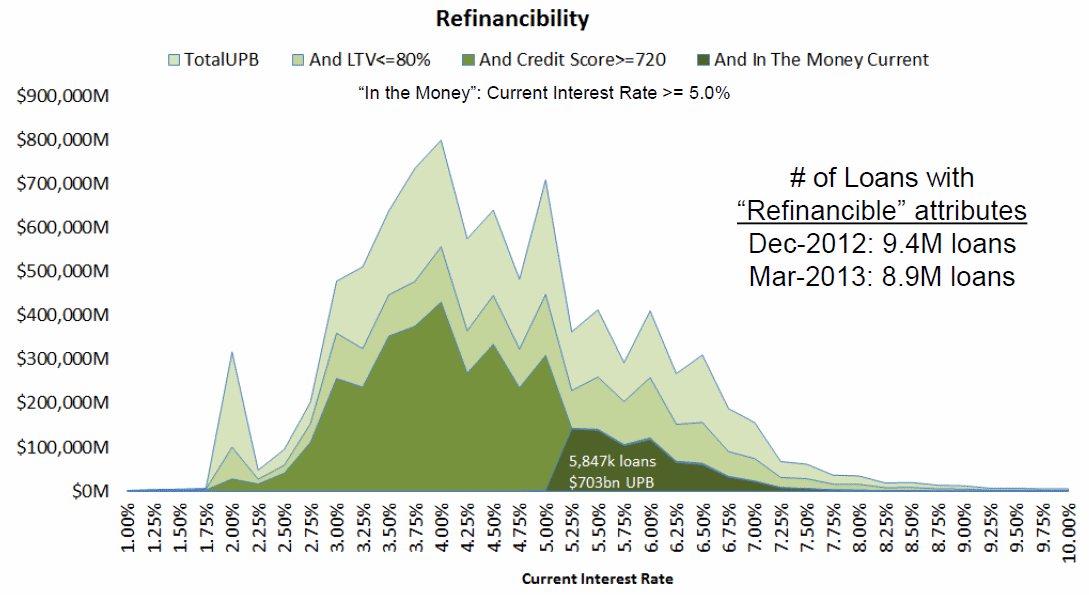 </p
</p
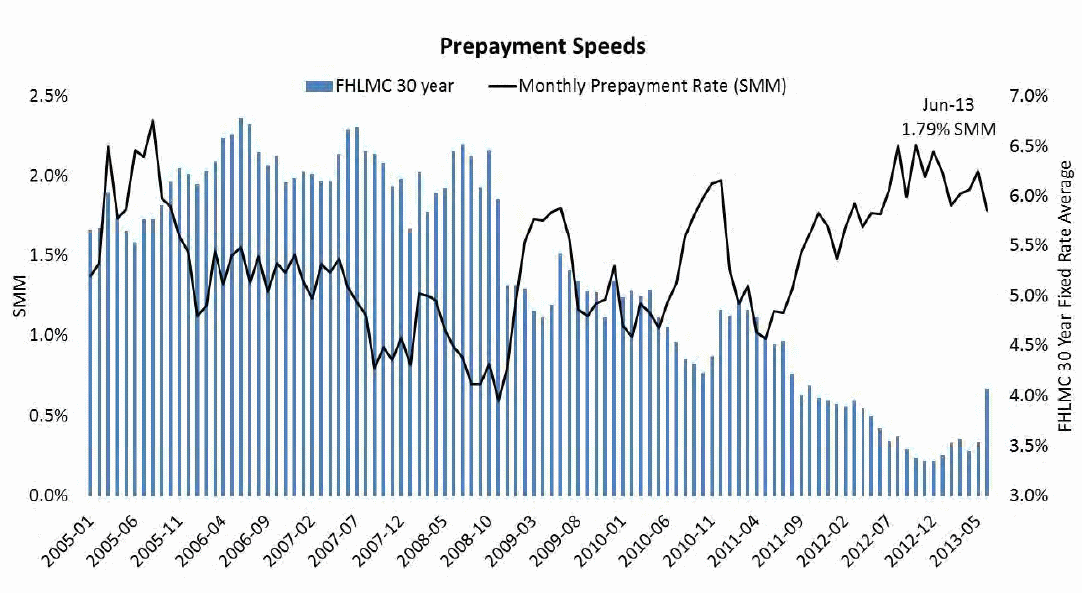
All Content Copyright © 2003 – 2009 Brown House Media, Inc. All Rights Reserved.nReproduction in any form without permission of MortgageNewsDaily.com is prohibited.
Latest Articles
By John Gittelsohn August 24, 2020, 4:00 AM PDT Some of the largest real estate investors are walking away from Read More...
Late-Stage Delinquencies are SurgingAug 21 2020, 11:59AM Like the report from Black Knight earlier today, the second quarter National Delinquency Survey from the Read More...
Published by the Federal Reserve Bank of San FranciscoIt was recently published by the Federal Reserve Bank of San Francisco, which is about as official as you can Read More...

Comments
Leave a Comment